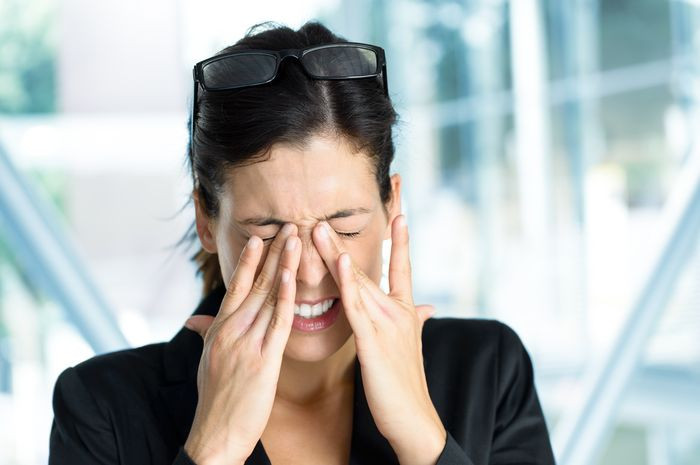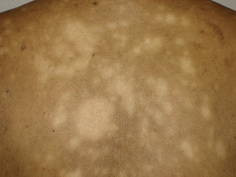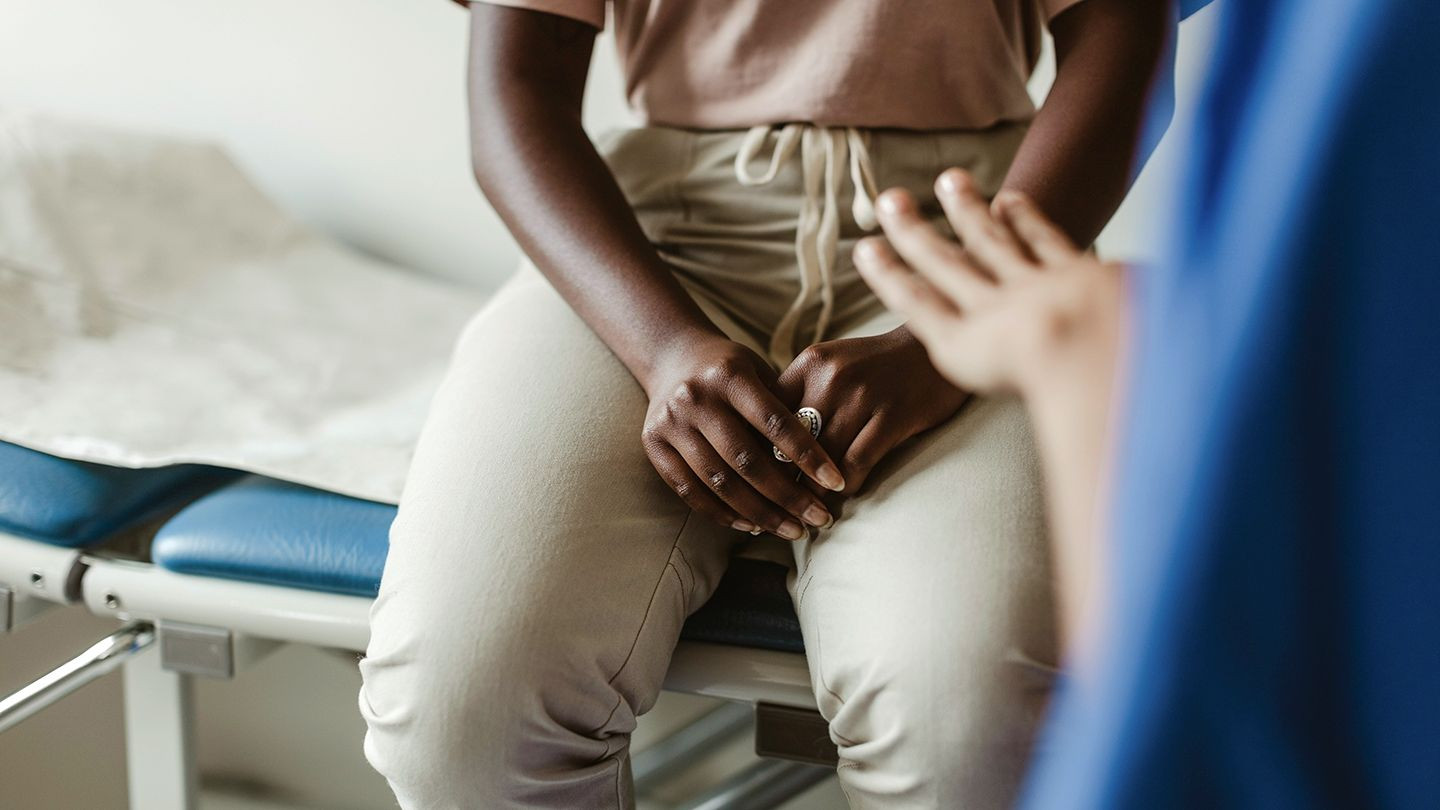Definisi
Sindrom de Quervain atau dikenal juga dengan sebutan tenosinovitis de quervain dan gamer’s thumb, adalah sebuah kondisi peradangan yang menyerang tendon tertentu pada sisi ibu jari dari pergelangan tangan. Nama penyakit ini diambil dari ahli bedah asal Swiss bernama Fritz de Quervain yang pertama kali menemukan dan mendeksripsikan kondisi ini pada tahun 1895.
Tendon adalah struktur yang berperan untuk merekatkan otot ke tulang, membuat otot bisa menarik dan menggerakkan tulang. Struktur ini dibungkus oleh lapisan tebal yang menjaga agar tendon tetap berada pada tempatnya. Adanya pembengkakan atau peradangan pada tendon dan selubungnya dapat menyebabkan terjadinya gesekan yang tidak normal. Kondisi ini bisa menyebabkan nyeri dan membuat pasien sulit menggerakkan ibu jari serta pergelangan tangannya.
Selain itu, sindrom de quervain juga bisa memberikan rasa nyeri, terutama ketika:
- Menggenggam barang.
- Memutar pergelangan tangan.
- Mengepalkan tangan.
- Melakukan aktivitas sehari-hari.
Sindrom de Quervain lebih banyak terjadi pada wanita, dengan puncaknya terjadi pada wanita berusia 40 hingga 50 tahun. Sindrom ini juga umum ditemukan pada pasien dengan riwayat epikondilitis (peradangan pada jaringan yang menghubungkan otot lengan dengan siku).
Umumnya, sindrom de quervain lebih sering terjadi pada satu sisi tangan saja. Walaupun tidak menutup kemungkinan sindrom ini terjadi pada kedua sisi tangan, terutama pada ibu baru dan pengurus anak karena mereka sering melakukan gerakan berulang dalam menggendong anak.
Penyebab
Penyebab dari sindrom de Quervain masih belum diketahui secara pasti. Sindrom ini memengaruhi dua tendon utama yang membantu menggerakkan ibu jari. Pembengkakan pada tendon dan/atau penebalan selubung tendon bisa membuat tendon membesar, tidak bisa muat di dalam selubungnya. Kondisi ini bisa membatasi gerakan tendon, meningkatkan gesekan dan menimbulkan nyeri saat melakukan gerakan tertentu yang melibatkan ibu jari serta pergelangan tangan.
Walaupun penyebab pastinya tidak diketahui, beberapa sumber menyebutkan ada hal-hal yang bisa berperan dalam kemunculan sindrom de quervain, yaitu:
- Mengepalkan tangan berulang dan berlebihan.
- Kondisi peradangan seperti rheumatoid arthritis.
- Penumpukan cairan di tubuh, contohnya akibat hormon pada saat kehamilan.
- Cedera langsung pada ibu jari atau pergelangan tangan.
- Aktivitas sehari-hari yang memerlukan gerakan dilakukan secara berulang dan berlebihan seperti:
- Berkebun.
- Olahraga dengan raket.
- Menggendong anak.
- Bermain ski.
- Menggunakan palu.
Faktor Risiko
Siapapun dapat terkena dan berisiko mengalami sindrom de Quervain , namun faktor–faktor di bawah ini bisa meningkatkan risiko terjadinya penyakit ini, antara lain:
- Usia
Orang dewasa dalam rentang usia 30-50 tahun lebih berisiko tinggi mengalami penyakit ini dibandingkan anak-anak.
- Jenis Kelamin
Jenis kelamin perempuan berisiko 8 kali lipat terkena sindrom de quervain dibanding laki-laki.
- Ibu yang Baru Melahirkan
Seorang ibu yang baru melahirkan dan sering menggendong bayinya terus-menerus berisiko untuk terkena sindrom de quervain.
- Atlet
Seseorang yang berprofesi sebagai atlet, terutama atlet olahraga raket seperti tenis dan golf, mengharuskan mereka untuk menggerakkan pergelangan tangan secara berulang. Sehingga mereka berisiko mengalami penyakit sindrom de quervain.
- Pergerakan Repetitif
Siapapun yang melakukan pergerakan dan aktivitas berulang, seperti mengetik pada keyboard komputer atau merajut, berisiko untuk mengalami penyakit ini.
Gejala
Penyakit ini bisa muncul tiba-tiba atau terjadi secara bertahap. Keluhan yang bisa dirasakan akibat sindrom de Quervain di antaranya:
- Nyeri di dekat dasar ibu jari yang bisa semakin berat saat menggerakkan tangan dan ibu jari. Nyeri bisa muncul tiba-tiba atau lama-lama semakin berat.
- Rasa sakit bisa menjalar dari ibu jari atau pergelangan tangan ke lengan bawah.
- Pembengkakan di samping pergelangan tangan atau di dekat dasar ibu jari.
- Kesulitan dalam menggerakkan tangan, terutama ketika memutar tangan, menggenggam, menjepit, atau mengangkat benda.
- Terdengar bunyi atau suara krepitasi ketika menggerakkan ibu jari.
Diagnosis
Dokter akan bertanya mengenai keluhan yang Anda rasakan secara detail, serta sejak kapan keluhan tersebut dirasakan. Keluhan pada area tangan umumnya akan memerlukan informasi terkait aktivitas Anda sehari-hari serta pekerjaan yang biasanya Anda lakukan. Selain itu, beri tahu dokter terkait pengobatan yang sudah Anda jalani serta riwayat penyakit yang Anda dan keluarga Anda miliki.
Kemudian dokter akan melakukan pemeriksaan umum dan pemeriksaan fisik. Pemeriksaan dilakukan terutama pada area tangan dan lengan, untuk melihat bila ada:
- Kelainan bentuk.
- Perubahan warna kulit.
- Pembengkakan.
- Nyeri saat ditekan.
- Kesulitan dalam melakukan pergerakan.
Dokter juga bisa meminta pasien untuk melakukan gerakan tertentu yang melibatkan penekukan ibu jari di dalam jari lainnya, mengepalkan tangan dan membengkokkan pergelangan tangan ke arah kelingking. Pasien bisa merasa nyeri pada area pergelangan tangan yang terlihat di gambar di bawah ini.
 Credit: Ortho Info.
Credit: Ortho Info.
Pemeriksaan penunjang umumnya tidak diperlukan untuk mendiagnosis sindrom de Quervain. Namun, dokter dapat menyarankan Anda untuk melakukan pemeriksaan penunjang seperti x-ray dan CT scan bila dokter mencurigai adanya fraktur atau penyebab lain yang menyebabkan nyeri pada pergelangan tangan Anda.
Tata Laksana
Sindrom de Quervain sebenarnya bisa sembuh sendiri. Pengobatan diberikan untuk mengurangi iritasi atau pembengkakan pada tendon dan selubungnya, diharapkan keluhan nyeri bisa berkurang. Pengobatan umumnya diberikan pada pasien dengan gejala yang persisten. Tata laksana sindrom de quervain dapat dilakukan dengan tata laksana non pembedahan dan tata laksana pembedahan.
Non-Bedah
- Bidai atau Splint
Bidai atau splint dapat diberikan untuk mengistirahatkan bagian ibu jari dan pergelangan tangan dan membantu agar mereka dalam posisi yang nyaman. Bidai dapat dipakai setiap hari selama 4 hingga 6 minggu.
- Kompres Dingin
Kompres es pada bagian yang nyeri dapat membantu untuk mengurangi pembengkakan dan radang.
- Obat-Obatan
Anda dapat menggunakan obat antinyeri seperti parasetamol atau ibuprofen untuk meredakan keluhan nyeri dan bengkak yang dirasakan. Selain itu, suntik steroid juga bisa menjadi pilihan pengobatan pada area tangan yang nyeri. Steroid bertugas sebagai antiradang, pemberian melalui suntikan dipertimbangkan karena dapat bekerja langsung pada bagian yang nyeri.
- Menghindari Aktivitas yang Memperparah Nyeri
Anda disarankan untuk tidak menggerakkan pergelangan tangan dan ibu jari terlalu sering. Diharapkan dengan pembatasan aktivitas, keluhan akan mereda dengan sendirinya.
Prosedur Bedah
Bila pengobatan non-bedah dirasa tidak berhasil dan gejala tergolong berat, prosedur pembedahan bisa menjadi pilihan pengobatan. Pembedahan dilakukan oleh dokter spesialis bedah tulang dengan membuat sayatan pada selubung tendon. Tujuan utama dari operasi adalah untuk memberi ruang bagi tendon yang teriritasi.
Bila berhasil, operasi bisa menghilangkan nyeri, bengkak, dan mengembalikan fungsi gerak dari ibu jari dan pergelangan tangan. Dalam proses pemulihan, dokter akan memberikan rekomendasi gerakan untuk mengembalikan kekuatan otot ibu jari dan pergelangan tangan. Tindakan ini biasanya tidak memerlukan rawat inap.
Komplikasi
Sindrom de Quervain jarang memberikan komplikasi tertentu. Namun komplikasi bisa terjadi setelah terapi pembedahan yang meliputi:
- Cedera pada saraf lengan (saraf radialis).
- Terperangkapnya otot pada pergelangan tangan.
- Subluksasi tendon, komplikasi langka di mana tendon terlepas dari posisi perlengketan normalnya.
- Nyeri pada bekas luka pembedahan.
- Infeksi pada bekas luka pembedahan.
Pencegahan
Sindrom de Quervain dapat dicegah, baik itu bila Anda belum pernah terkena ataupun bila anda sudah pernah mengalami penyakit ini dan tidak ingin kondisi tersebut muncul kembali. Pencegahan dapat dilakukan dengan mengurangi aktivitas berulang yang dapat menyebabkan nyeri muncul seperti yang sudah dijelaskan di atas.
Anda juga dapat beristirahat dan melakukan peregangan sesekali pada bagian pergelangan tangan ketika melakukan aktivitas tersebut. Jika Anda sudah pernah terkena sindrom de Quervain sebelumnya, penting untuk melakukan latihan yang direkomendasikan oleh dokter untuk mengembalikan kekuatan otot ibu jari dan pergelangan tangan.
Kapan Harus ke Dokter?
Anda harus ke dokter bila merasakan nyeri pada ibu jari yang tidak kunjung hilang dan membatasi kemampuan Anda dalam beraktivitas. Bila tidak membaik dengan pengobatan awal, dokter umum dapat merujuk ke dokter spesialis bedah tulang bila perlu.
Mau tahu informasi seputar penyakit lainnya? Cek di sini, ya!
- dr Hanifa Rahma
Cleveland Clinic – De Quervain’s Tendinosis. (2020). Retrieved 5 September 2022, from https://my.clevelandclinic.org/health/diseases/10915-de-quervains-tendinosis.
Mayo Clinic – De Quervain Tenosynovitis. (2022). Retrieved 5 September 2022, from https://mayoclinic.org/diseases-conditions/de-quervain-tenosynovitis/symptoms-causes/syc-20371332.
Ortho Info – De Quervain’s Tenosynovitis. (2021). Retrieved 5 September 2022, from https://orthoinfo.aaos.org/en/diseases--conditions/de-quervains-tendinosis.
Satteson E., Tannan SC., (2022). De Quervain Tenosynovitis. Retrieved 5 September 2022, from https://www.ncbi.nlm.nih.gov/books/NBK442005/.
Web MD – What’s de Quervain’s Tenosynovitis? (2022). Retrieved 5 September 2022, from https://www.webmd.com/rheumatoid-arthritis/guide/de-quervains-disease.












